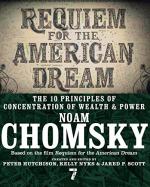|
This section contains 1,259 words (approx. 4 pages at 400 words per page) |

|
Summary
As far back as Ancient Greece, democracy was (and has continuously been) accepted as the most effective form of government. The ongoing battle between the “pressure for more freedom and democracy from below,” and “efforts at elite control and domination coming from above,” however, has defined democracy (1). James Madison, one of the main framers of the constitution and leading supporters of democracy, saw democracy’s innate flaw: the poor could vote to take the property of the rich. Thus, the rich, better educated and “more responsible,” were given primary control over the U.S. government from its founding (1). While the government was initially “designed to prevent the danger of democracy,” the dangers of inequality and wealth concentration soon took shape (3).
Two markedly different solutions arose to the problem of democracy throughout history: to reduce inequality, and to reduce democracy. Reducing inequality, first introduced...
(read more from the Reduce Democracy Summary)
|
This section contains 1,259 words (approx. 4 pages at 400 words per page) |

|




